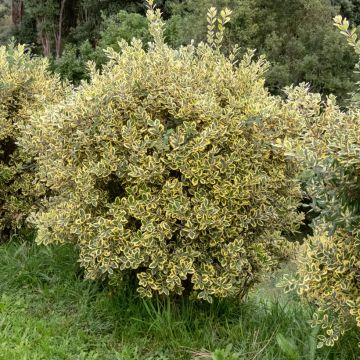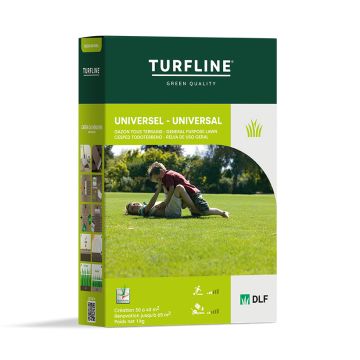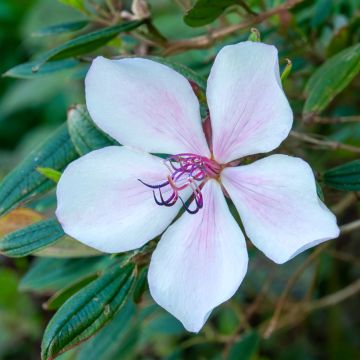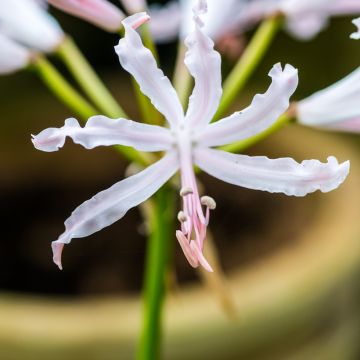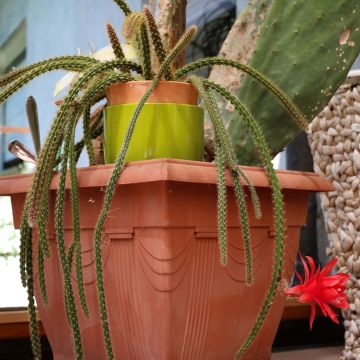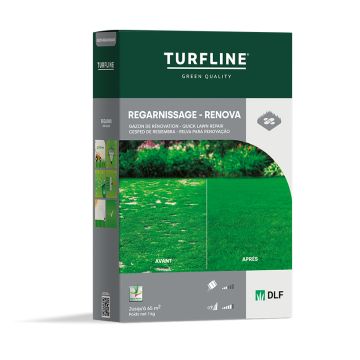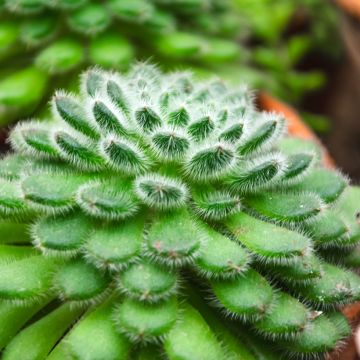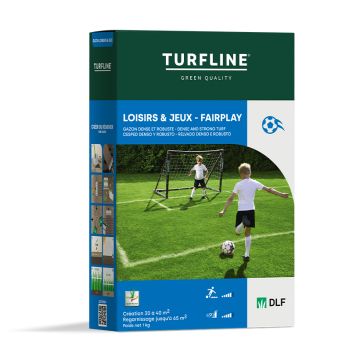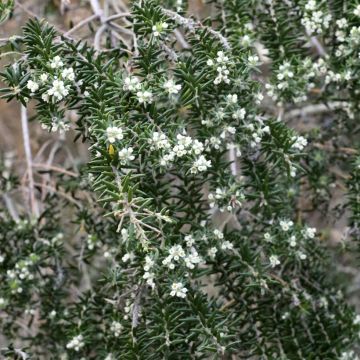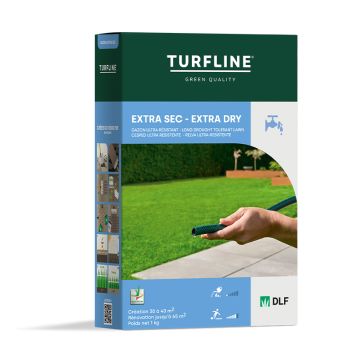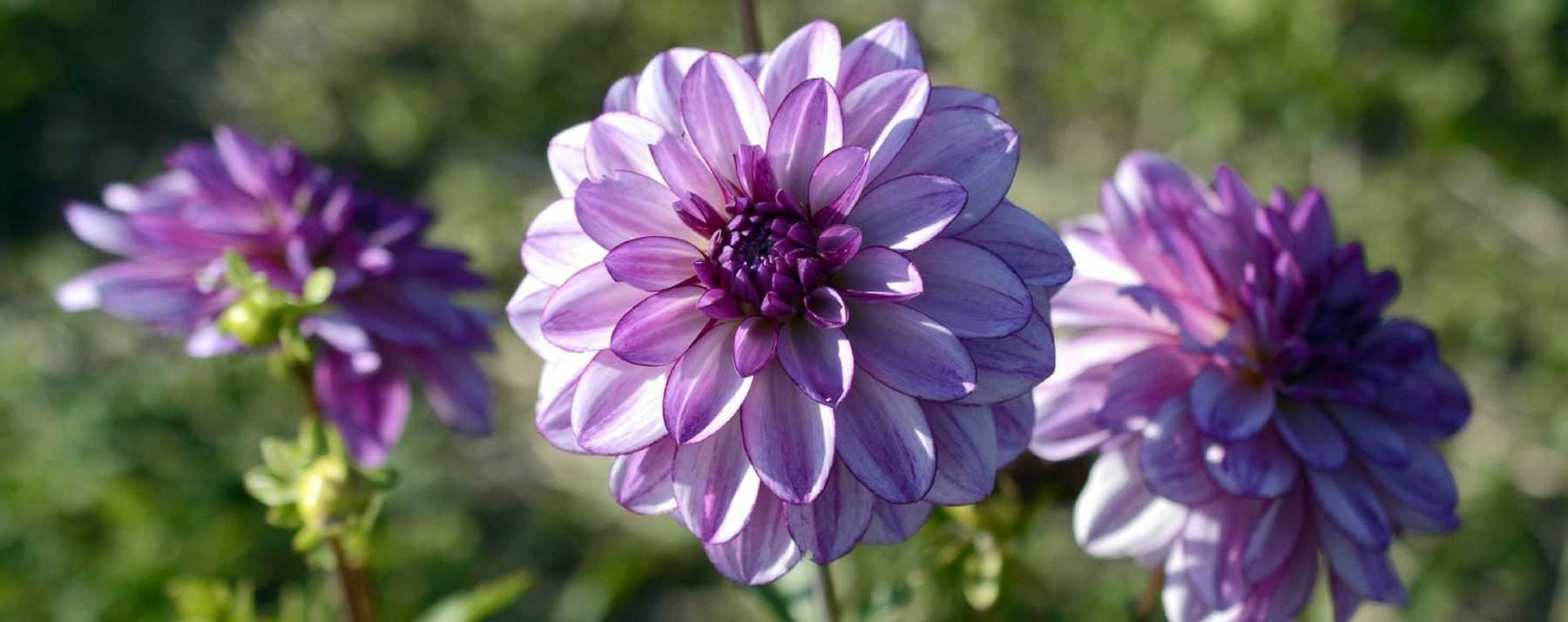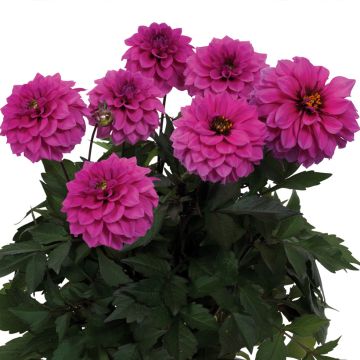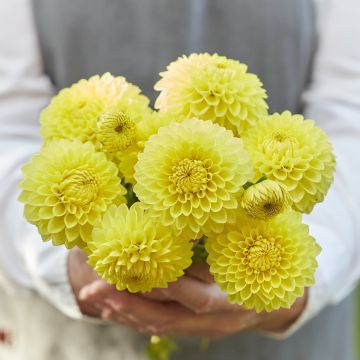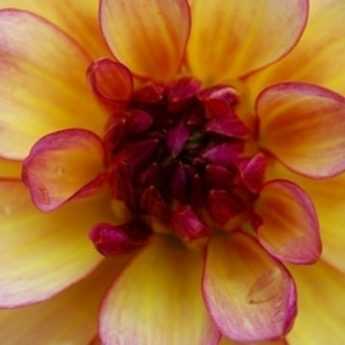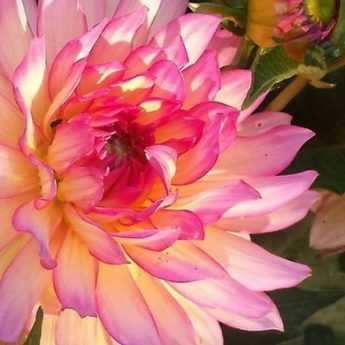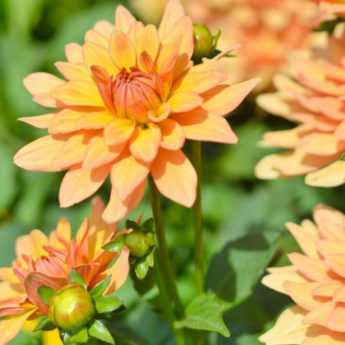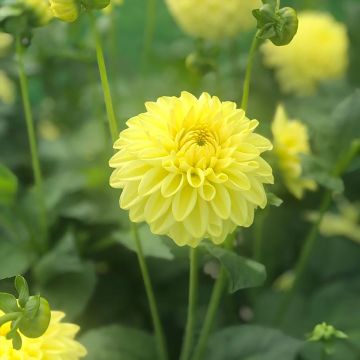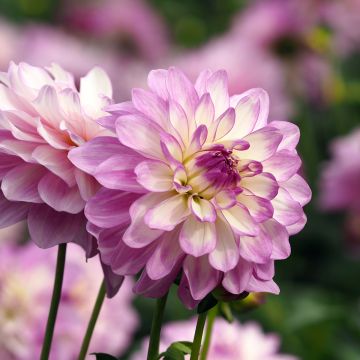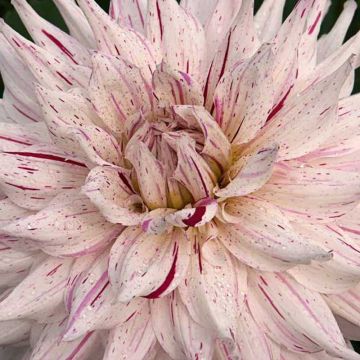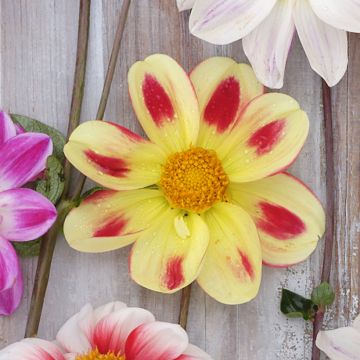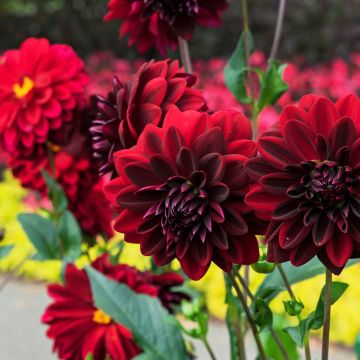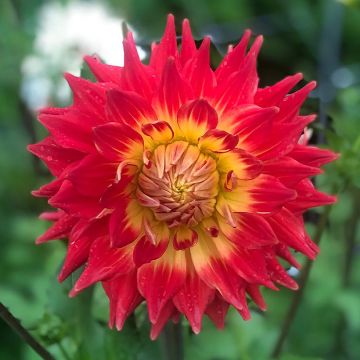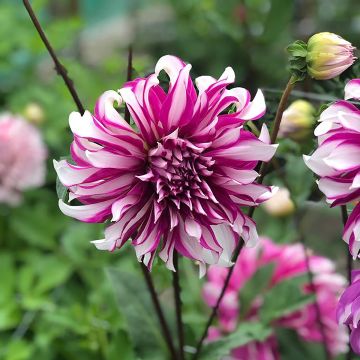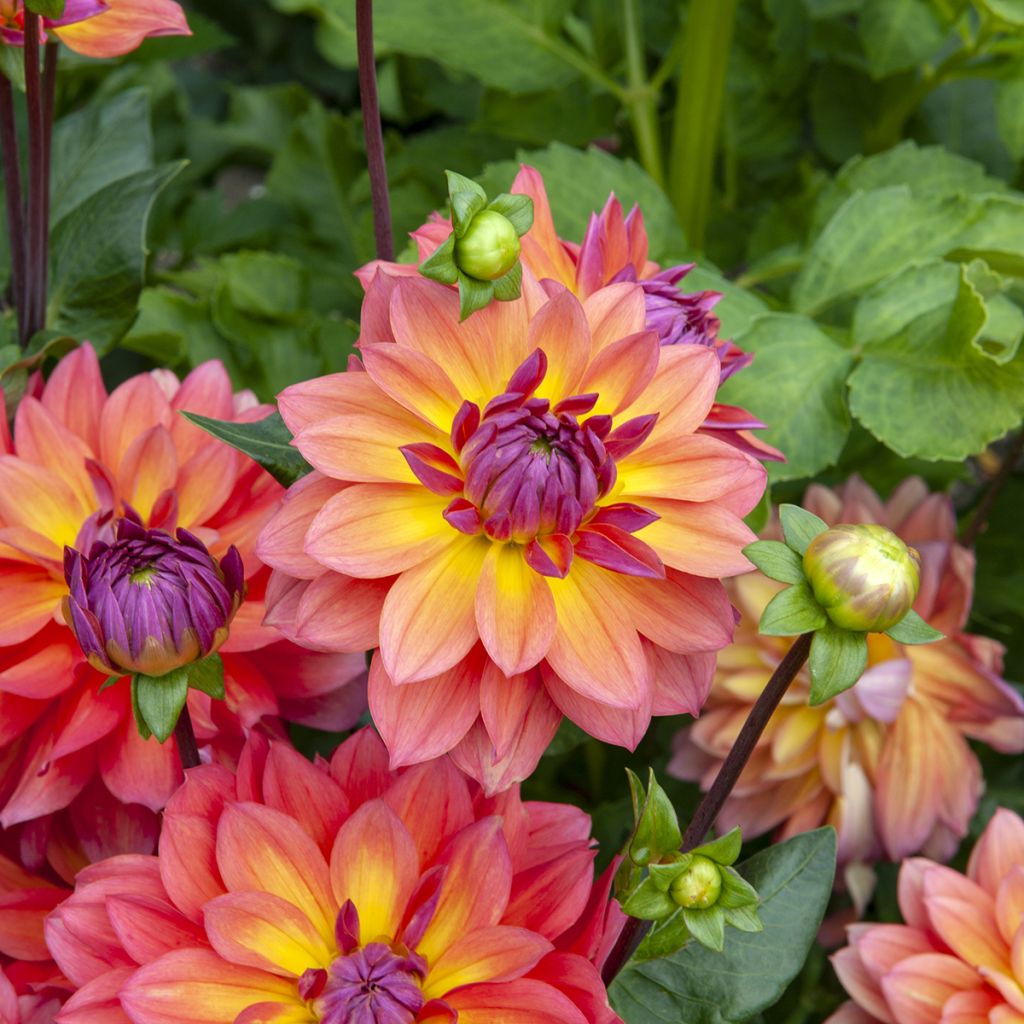

Dahlia nain décoratif Firepot
Dahlia Firepot
Dahlia Firepot
Dahlia
Why not try an alternative variety in stock?
View all →This plant carries a 6 months recovery warranty
More information
We guarantee the quality of our plants for a full growing cycle, and will replace at our expense any plant that fails to recover under normal climatic and planting conditions.
From €7.90 for pickup delivery and €6.90 for home delivery
Express home delivery from €8.90.
Does this plant fit my garden?
Set up your Plantfit profile →
Description
Dahlia 'Firepot' is a modest variety, but floriferous and brilliantly coloured. It is ideal for ornamental pots and borders. Its beautiful waterlily-like flowers display a changing colour that blends different shades of yellow and orange. They are produced in abundance from summer to the first frost if you regularly remove faded blooms.
Dahlias belong to the Asteraceae family and are originally from the high plateaus of Mexico. There are currently thousands of horticultural varieties that have conquered gardens worldwide. They are tender perennials with fleshy tubers.
'Firepot' was registered in 2016. It is a semi-dwarf dahlia that will not exceed 55 to 60cm in height and 50cm (20in) in width. It is also classified as a decorative dahlia, which is a horticultural category defined by the shape of the flower. In this group, the coloured ligules of the head are regularly arranged in a spiral. They can be curved towards the stem or curly, for example. The flowers measure up to 8cm (3in) in diameter. The flowering period is from July to October. The bushy and compact habit does not usually require staking. The highly branched stems are hollow, and the leaves are opposite and divided into 3 or 5 deeply toothed lobes. The leaves and stems are a bright green colour.
Remove faded flowers to encourage new blooms. You can use cut flowers to make colourful bouquets, combining them with other varieties.
'Firepot' pairs particularly well with the white flowers of Dahlia 'Gallery Art Fair', the blue flowers of Geranium 'Rozanne', as well as the silvery foliage of Cineraria maritima. 'Firepot' will look wonderful alongside echinaceas, daylilies, and asters, which bloom at the same time. This modest variety is perfect for container gardening.
Dahlias are stars of borders and ornamental gardens, confidently accompanying the most beautiful flowers. However, they are also appreciated alongside vegetable plants. In Mexico, this tuberous plant was first cultivated as a root vegetable for consumption. Its poor taste qualities quickly saw it categorised as an ornamental plant. Since then, the interest in their beautiful exuberance has never waned.
Dahlia Firepot in pictures
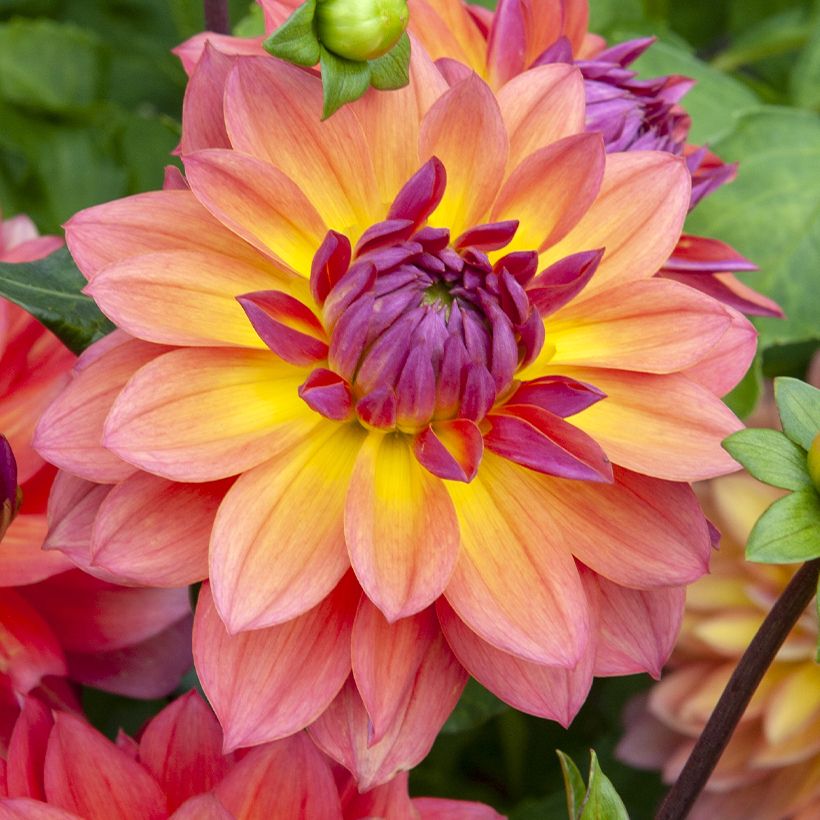

Plant habit
Flowering
Foliage
Botanical data
Dahlia
Firepot
Asteraceae
Dahlia
Cultivar or hybrid
Other Dwarf Dahlias
View all →Planting and care
Dahlia 'Firepot' is easy to grow in all regions. Plant in spring as soon as the last frost has passed. For abundant flowering, plant the tubers in full sun in rich, moist but well-drained soil. Stagnant moisture causes tuber rot. Amend the soil with compost and sand, if necessary. Work the soil deeply and enrich it, for example, with crushed horn or dehydrated blood. Place your tuber and crumble the soil well to fill without air pockets. Cover with about 6cm (2in) of soil. At the end of planting, water once abundantly and then repeat this watering regularly during the first 6 weeks to help with rooting.
Dahlias are sensitive to cold, so they need to be overwintered. Dig the tubers up when the first frost has blackened the foliage. Carefully remove the tubers. Remove as much soil as possible. Let the foliage dry so that the tubers can replenish their reserves. Then cut the stems to 10cm (4in). Spread your bulbs in a box lined with newspaper. Store them in a frost-free, dry, cool, and dark place, such as a garage or attic. In mild regions without frost, or those close to the coast, it is possible to leave them in place. In this case, simply cover the ground with a carpet of leaves or straw for protection.
Planting period
Intended location
Care
Planting & care advice
-
, onOrder confirmed
Reply from on Promesse de fleurs
Dahlias
Haven't found what you were looking for?
Hardiness is the lowest winter temperature a plant can endure without suffering serious damage or even dying. However, hardiness is affected by location (a sheltered area, such as a patio), protection (winter cover) and soil type (hardiness is improved by well-drained soil).

Photo Sharing Terms & Conditions
In order to encourage gardeners to interact and share their experiences, Promesse de fleurs offers various media enabling content to be uploaded onto its Site - in particular via the ‘Photo sharing’ module.
The User agrees to refrain from:
- Posting any content that is illegal, prejudicial, insulting, racist, inciteful to hatred, revisionist, contrary to public decency, that infringes on privacy or on the privacy rights of third parties, in particular the publicity rights of persons and goods, intellectual property rights, or the right to privacy.
- Submitting content on behalf of a third party;
- Impersonate the identity of a third party and/or publish any personal information about a third party;
In general, the User undertakes to refrain from any unethical behaviour.
All Content (in particular text, comments, files, images, photos, videos, creative works, etc.), which may be subject to property or intellectual property rights, image or other private rights, shall remain the property of the User, subject to the limited rights granted by the terms of the licence granted by Promesse de fleurs as stated below. Users are at liberty to publish or not to publish such Content on the Site, notably via the ‘Photo Sharing’ facility, and accept that this Content shall be made public and freely accessible, notably on the Internet.
Users further acknowledge, undertake to have ,and guarantee that they hold all necessary rights and permissions to publish such material on the Site, in particular with regard to the legislation in force pertaining to any privacy, property, intellectual property, image, or contractual rights, or rights of any other nature. By publishing such Content on the Site, Users acknowledge accepting full liability as publishers of the Content within the meaning of the law, and grant Promesse de fleurs, free of charge, an inclusive, worldwide licence for the said Content for the entire duration of its publication, including all reproduction, representation, up/downloading, displaying, performing, transmission, and storage rights.
Users also grant permission for their name to be linked to the Content and accept that this link may not always be made available.
By engaging in posting material, Users consent to their Content becoming automatically accessible on the Internet, in particular on other sites and/or blogs and/or web pages of the Promesse de fleurs site, including in particular social pages and the Promesse de fleurs catalogue.
Users may secure the removal of entrusted content free of charge by issuing a simple request via our contact form.

































